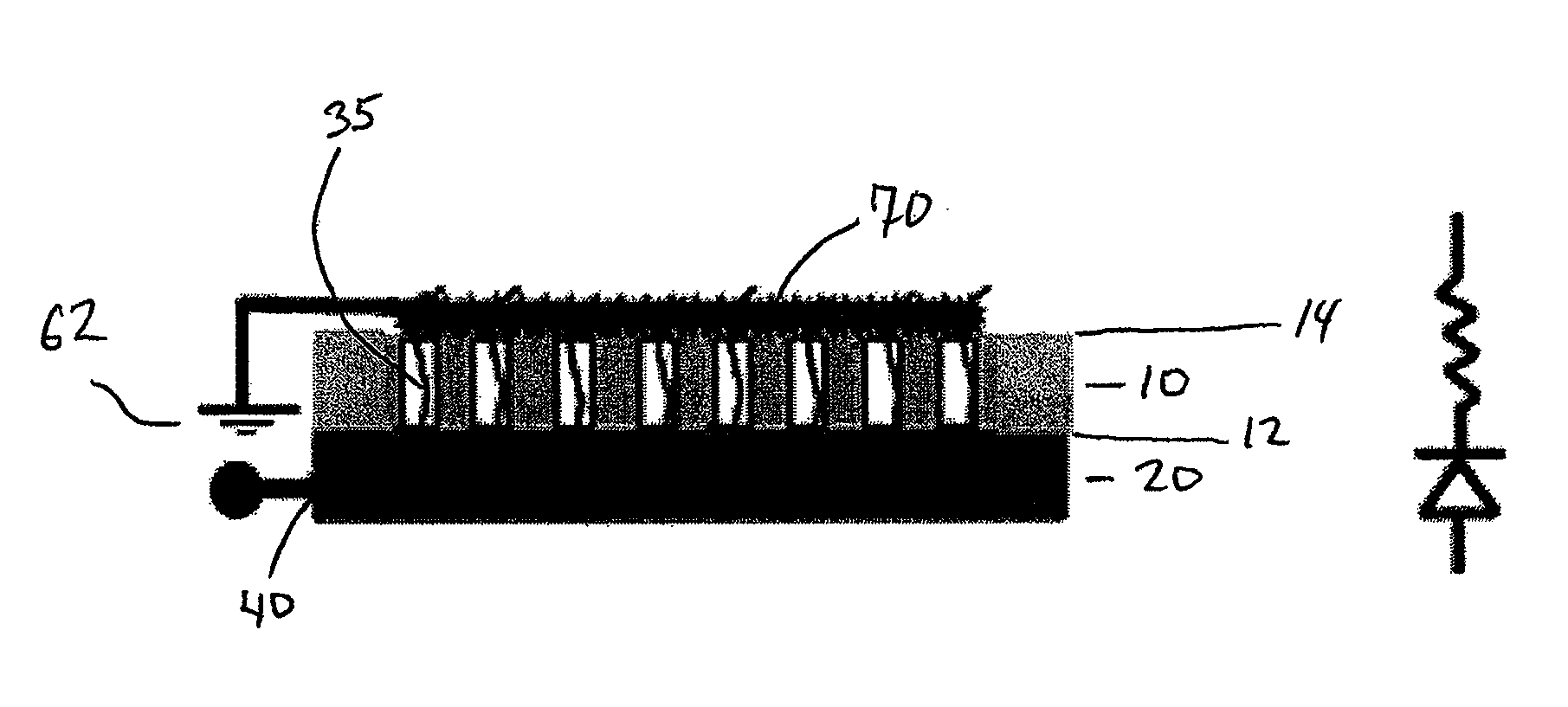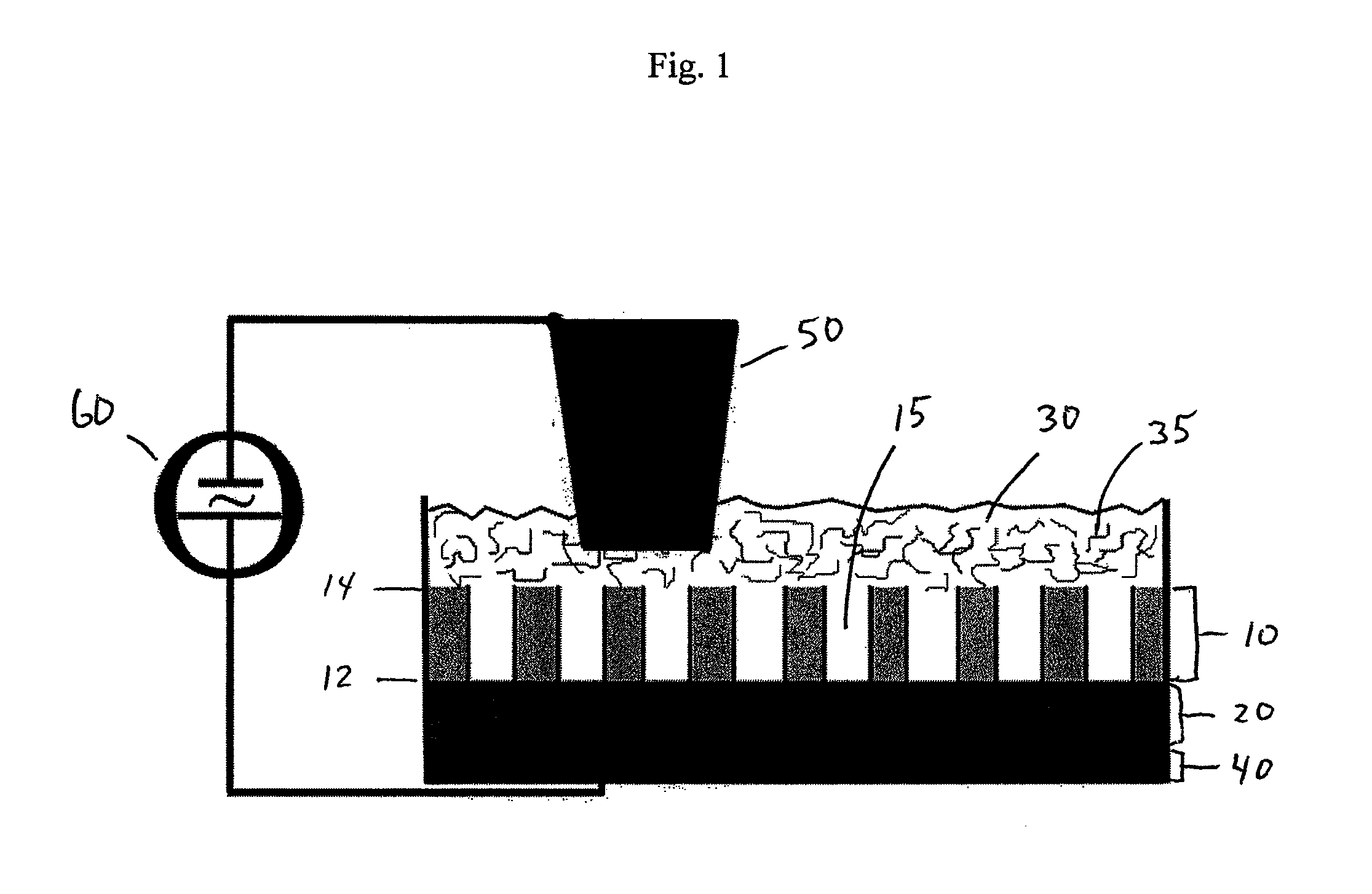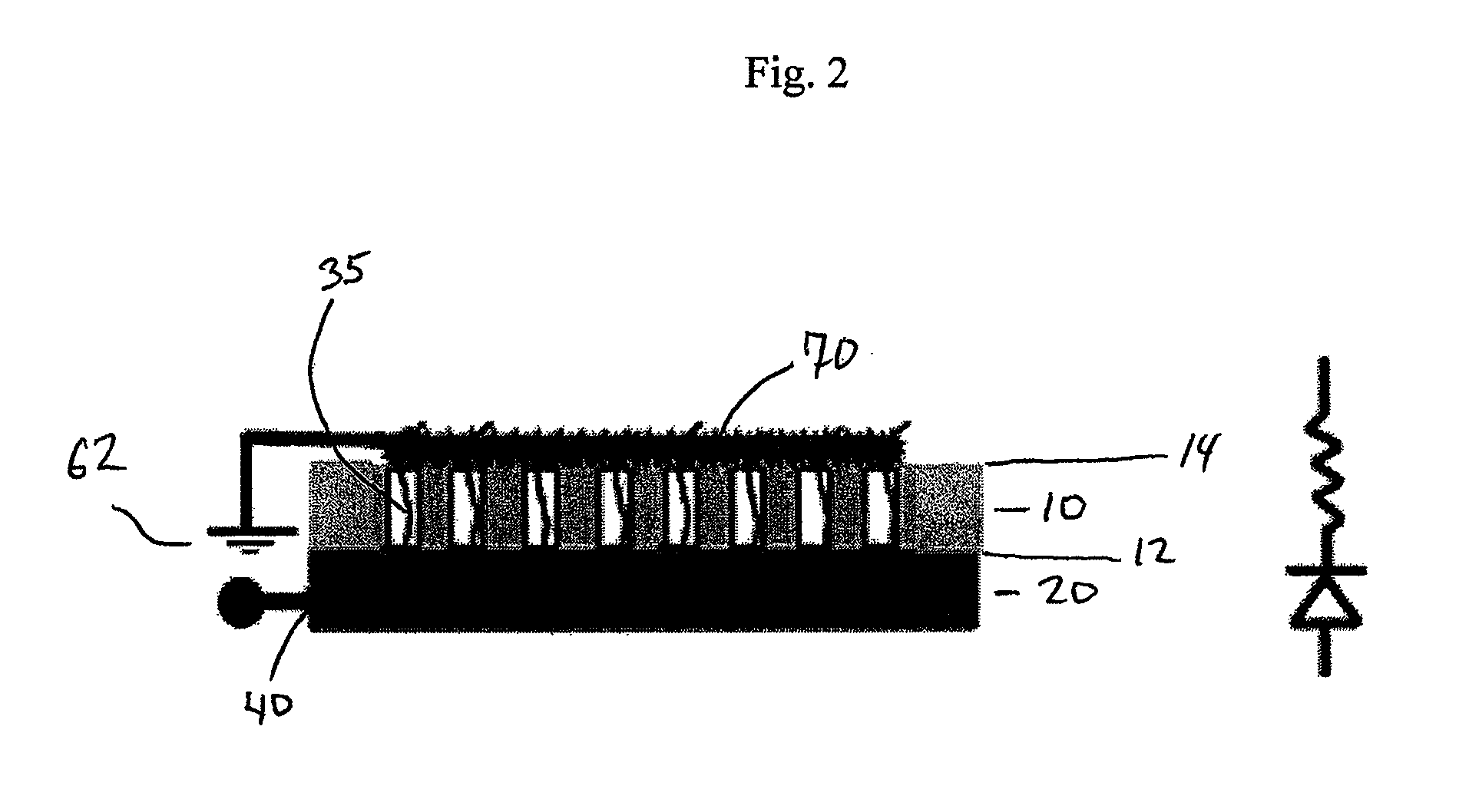Large scale nanoelement assembly method for making nanoscale circuit interconnects and diodes
a nanoelement and assembly method technology, applied in the field of single walled carbon nanotubes, can solve the problems of lack of scalability needed for high-rate manufacturing methods previously availabl
- Summary
- Abstract
- Description
- Claims
- Application Information
AI Technical Summary
Problems solved by technology
Method used
Image
Examples
example 1
Preparation of a Nanoporous Alumina Template
Porous alumina nanotemplates were prepared on 0.1×0.1 cm2 n-doped Si substrates (3-7 Ωcm). 1 μm thick Al was deposited by e-beam deposition on Si. Ordered nanoporous alumina templates were prepared by two step anodization (Matsuda et al., Li et al.) of the Al surface on the Si chip in 5 wt % oxalic acid. Anodization was carried out at 5 C under a constant 40 V DC potential until the whole Al layer was consumed (approx. 12 min). The resulting aluminum oxide barrier layer was removed by soaking in 5 wt % phorphoric acid for 40 min. The process produced a periodic, hexagonally-ordered nanoporous layer with pore diameter about 40 nm and thickness around 1 μm. The total area of alumina array was 0.4 cm2.
example 2
Preparation of a Three-Dimensional Assembly of SWNT
Negatively charged SWNT (Nantero, MA) were used for assembly into an alumina template prepared as described in Example 1. The SWNT solution was prepared in ethanol, and assembly occurred under 10V DC together with 10V AC at 10 MHz. A schematic of the assembly process can be seen in FIG. 1. The counter electrode was moved constantly to achieve assembly over large surface areas.
A pointed wire counter electrode was used for the assembly. This form of counter electrode can approach the template much closer, and the resulting electric field magnitude consequently is larger. The non-uniformity of the electric field is another reason for choosing a pointed electrode.
example 3
Characterization of a Three-Dimensional Assembly of SWNT
The SWNT assembly from Example 2 was studied using scanning electron microscopy (SEM) and its current-voltage relationship was determined.
The SEM images of the assembly (FIG. 3) show that SWNT migrated into the holes. The SWNT also stayed partly on the surface since the length of SWNT was much larger than the template thickness. Although the size of individual SWNT is too small to be visible under SEM, it was possible to see SWNT bundles as shown at FIG. 3.
Since SEM was not an optimal technique for investigating the quality of the assembly, the current passing between the top and bottom layer of the assembly through assembled SWNT was also measured (FIG. 4A). The upper surface of the alumina template was sputtered with a 15 nm thick Au layer to form an electrical connection between all the SWNT on the surface. The I-V measurement was carried out using a parameter analyzer with a probe station by attaching one electrode to the A...
PUM
| Property | Measurement | Unit |
|---|---|---|
| surface area | aaaaa | aaaaa |
| conductivity | aaaaa | aaaaa |
| conductivity | aaaaa | aaaaa |
Abstract
Description
Claims
Application Information
 Login to View More
Login to View More - R&D
- Intellectual Property
- Life Sciences
- Materials
- Tech Scout
- Unparalleled Data Quality
- Higher Quality Content
- 60% Fewer Hallucinations
Browse by: Latest US Patents, China's latest patents, Technical Efficacy Thesaurus, Application Domain, Technology Topic, Popular Technical Reports.
© 2025 PatSnap. All rights reserved.Legal|Privacy policy|Modern Slavery Act Transparency Statement|Sitemap|About US| Contact US: help@patsnap.com



